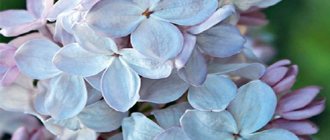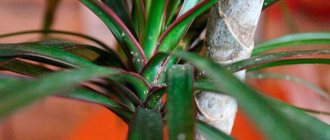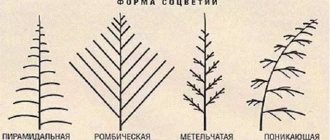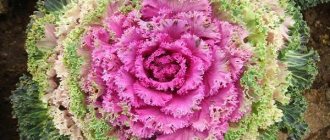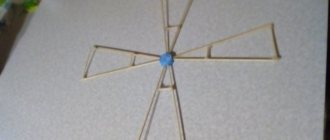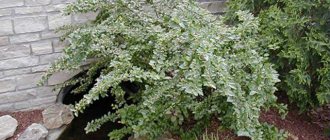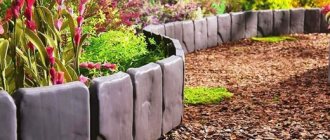Features of growing spirea
Although the spirea flower is not so demanding to care for, it has its own characteristics for growing. These are such as:
- It is better to choose a soil of leaf or turf type. The most suitable ratio is: 2 parts earth, part sand and part peat.
- The bottom of the hole should be covered with a drainage layer. Broken brick is suitable as a material for such a design.
- The size of the pit should exceed the dimensions of the butt by a third.
- The plant should be planted in the ground to a depth of at least half a meter, taking into account the fact that the root collar and the soil surface level must be on the same line.
- Gardeners recommend choosing a cloudy day for work; a rainy one would be even better. The optimal month for this work is September.
Planting spirea
To achieve a healthy plant that will bloom luxuriantly, you do not need to put in much effort. There are basic rules for planting and caring for spirea, following which you will be able to achieve the desired result.
Planting spirea in spring
It is allowed to choose this time for work only if the variety blooms in summer. The plant should be planted before the buds begin to bloom. For successful growth and development of the shrub, it is important to carefully examine the root system. It should not be overdried.
It’s good if the shoots are flexible and have full buds.
Once a specimen for planting has been selected, it should be properly prepared for work. If the roots are too long, they must be shortened to the desired length. If there are damaged elements on them, for example, overdried, then they will have to be removed. Also, when a seedling is stored for too long, it becomes dry. To eliminate this problem, it is first moistened with water or immersed in liquid for several minutes, and only after this procedure proceed to planting.
Also, for successful development, you need to take a responsible approach to choosing a site. It should be well illuminated by the sun's rays, and the soil composition should have a high level of nutrients. This plant is distinguished by its large root system. This point should also be taken into account when choosing a landing site.
Work with planting begins with organizing the hole. Its edges should be made plumb. After digging a hole, it needs to be allowed to stand for about 2-4 days. The drainage layer should be about 15-20 centimeters thick. This point should never be skipped, especially if the soil is clayey. The prepared soil mixture is poured into the hole, and then the roots of the plant are carefully introduced. They are poured over them again and lightly compacted. Having done this work, water the seedling with 20 liters of water, and then add a peat layer.
Planting spirea in autumn
During this period, the spirea that blooms in spring and summer is planted. It is important to do this before the leaves fall. To do this, first divide the bush. It is better to work with a specimen that has already reached 3-4 years of age.
You can work with those that are older, but this process will be more labor-intensive due to the larger and heavier root system.
In the process of removing the shrub, you should take with you a little more than half of the crown projection, and then rinse the root system under running water. If the plant is young and the root system is still light, then it will be enough to simply place it in a bucket and fill the container with water.
After waiting a little time, we wash and straighten the root system. We divide the shrub into 2-3 parts using pruning shears so that each has a full-fledged root lobe and a pair of powerful leaves. We trim the cord-type roots. The hole should be filled with soil mixture and the cutting should be placed in it, carefully distributing the roots. Cover the top with soil and lightly compact it. We water the seedling several times with water.
Mineral fertilizers
Urea and saltpeter are well suited for flowering bushes: calcium, potassium and ammonium. Nitrogen fertilizers should be used in combination with phosphorus fertilizers. In the first half of summer, emphasis is placed on the first group of fertilizing (promoting growth).
At the end of summer, you should not feed the bush with mixtures containing nitrogen, as they can provoke the growth of new shoots that do not have time to fully form and die in the winter.
| Fertilizer application rates, (g per m²) | ||
| Saltpeter | Ammonia (NH4)(NO3) | 10-15 |
| Calcium Ca(NO3)2 | 20 | |
| Potassium KNO3 | 20 | |
| Superphosphate (CaH2PO4)2 x H2O + 2CaSO4 x 2H2O | 35-40 | |
| Urea CH4N2O | 30 | |
- Mineral mixtures are added before flowering.
- All fertilizers can be introduced both in dry and liquid form, combined with watering.
- If the fertilizer consists of granules, then they need to be scattered near the plant. Application rate: 70-100 g per 1 m².
- A solution of phosphorus and potassium fertilizers is poured into a recess made at the base.
- The next day after the introduction of fertilizing, the soil is loosened.
Spiraea is very useful: it serves as a decoration for the garden, is characterized by good survival rate and long flowering, unpretentiousness, gas resistance (in urban conditions), and has phytoncidal activity (disinfects the air). Many species of this plant are considered medicinal (decoctions and infusions of the bark, flowers and shoots of the willow spirea have an antifungal effect, etc.), are honey plants, and are used to strengthen slopes and ravines.
Spirea care
To achieve maximum decorative features, you should provide your spirea with quality care. It needs to be trimmed into the desired shape, monitor the leaves and branches, and also control pests.
How to care for spirea
Among the varieties of spirea, there are those that love a lot of light, and there are those that behave better in conditions of a lot of shade. If we talk about the type of soil, soil with a loose consistency and a high level of nutrients is more suitable. In addition to the soil, it is also important to have a drainage layer and 7 cm of mulch on top of the ground.
The spirea flower needs regular moderate watering because the roots are not very deep. During dry climates, the plant should be watered every 14 days, using 1.5 buckets of liquid. It is also necessary to ensure that the soil is loosened at all times and free of weeds.
Feeding is carried out in several stages. The first procedure using a complex product with a mineral composition is carried out after pruning. On the 15th of July, a solution of mullein with the addition of superphosphate is used for fertilizer - 10 grams per bucket of solution.
There is also a small chance of aphids and spider mites appearing on the plant. To remove aphids, use pirimor, and to fight mites, use karbofos.
Spirea pruning
Due to the fact that this plant grows at a fairly high speed, pruning of spirea is carried out according to a certain system. Those varieties that bloom in spring have inflorescences along the entire length of the stems. For this reason, they should be pruned only once after winter frosts, removing the ends of the branches damaged by the cold. But when the plant reaches the age of 7-14 years, it is cut almost to the level of the stump.
When this stump sprouts new shoots, you will need to select about five healthy, full-fledged stems in order to then form a shrub. All stems that were not selected must be removed. After a couple of years, those stems that have become weak or damaged, as well as those that have already become old, are cut off. The ends of the stems need to be trimmed only in the spring before the buds open completely. If we talk about old branches, they can be removed at any time.
Late-blooming varieties should be pruned annually when spring arrives. Some branches are removed to the level of the first bud, and the weakest and smallest branches are removed completely. It is important to monitor the condition of the shoots in order to promptly remove those that are starting to age, because over time they will become dry.
After the 4th anniversary, specimens are pruned to a height of 30 cm every year. If, despite all this work, the plant is still weak, it will have to be replaced. Typically, the lifespan of species that bloom in summer is about 15-20 years.
Organic fertilizers
In addition to spring feeding, be sure to fertilize the plant before flowering and after pruning. Organic fertilizers are applied after sanitary pruning.
- Mullein is used as a source of nutrients, adding a little superphosphate to it.
- If necessary, manure is replaced with chicken droppings.
How to prepare cow infusion:
- Mix 5 parts manure and 1 teaspoon water in a large container.
- Mix everything thoroughly.
- Cover the resulting mixture with a lid and leave for 2 weeks, remembering to stir periodically (about once a day).
- Before use, the infusion is diluted with water (1 to 10), superphosphate is added (10 g per 10 liters).
| Plants | Bucket/bush |
| Tall bushes | 1-2 |
| Low-growing plantings (up to 0.5 m) | 0,5 |
You can feed with peat, ash or compost.
The ash solution replaces the potassium needed at the end of summer.
How to make compost:
- The aerobic variety can be done on the ground or in a special box. Almost any container from 200 liters is suitable for a composter; its walls should retain heat, but allow a certain amount of air to pass through, and there should be no obstacles at the bottom for excess water to flow out. Anaerobic compost (without air access) is prepared in a pit, which is then covered with film.
- The box is filled with a mixture consisting of weeds, coffee, tea leaves, vegetable peelings, green plants, fallen autumn leaves, sawdust, straw, dried flowers, paper products, eggshells, etc.
- All ingredients are thoroughly ground.
- The following is not added to compost:
- blooming crops;
- seeds;
- perennial rhizomatous weeds;
- feces;
- plants affected by diseases;
- garden waste that contains traces of herbicides and insects;
- bread, nuts, pasta, ready meals.
- Aerobic organic matter must be stirred periodically.
- Compost should not be either excessively dry or very wet. The optimal humidity is 70%. In hot weather, the mixture is watered more abundantly than usual.
- Temperature during formation is also important: the fertilizer should be warm or hot to the touch. If the temperature is insufficient, nitrogen-containing materials must be added to the compost.
- To speed up the composting process, add a little soil or compost starter to the mixture.
- In the warm season, compost matures in 3-5 months; when special preparations are used to speed up the process, it takes 8 weeks.
- The finished fertilizer is a homogeneous mass.
Reproduction of spirea
There are three methods of propagating this plant: using seeds, layering or cuttings. Gardeners do not recommend propagating hybrid varieties by seeds, because the characteristics of the variety will not be preserved. Cuttings are considered a more successful method. Experience has shown that 70% of cuttings develop roots within a short period of time without the help of stimulants.
Species that bloom in spring should be cut from early June, and those that bloom in summer should be cut in the second part of June or July. When the cuttings begin to become woody, they can be rooted when September-October arrives. To do this, the stem, which has reached one year, is divided into several parts so that each of them has 5-6 leaves. Those leaf plates that are located at the bottom of the stem should be removed along with the petioles.
The upper leaves are cut in half. Then the cuttings are kept in an epin solution for 12 hours. For the correct concentration of the solution, you can follow the following rule: 1.5 ml of epin per 3 liters of water. Afterwards, the lower node is blotted with root and planted in a pot at an angle of 30-45 degrees. There should already be wet sand inside it. The container is covered with glass or film and taken to a shaded room. Every 2-3 parts you need to moisten the container using a spray bottle.
When frost occurs, you should dig the cuttings into the ground and cover them with dry leaves, as well as a box turned upside down. This design should last until spring. When young shoots appear, this is a sign to transplant to a permanent territory.
To propagate by layering, we create a groove in the ground, place the stem in it, fix it and cover it with soil. When new shoots appear, you will need to pinch the top of the cuttings. Thanks to this trick, all the buds located on the sides will become capable of sprouting. In the fall, the cuttings are taken out, divided into formed shoots and planted on a permanent site.
Spiraea after flowering
After flowering, the spirea bush requires standard care. It consists of loosening the soil, watering, pruning. If planting and care in open ground are carried out according to the rules, then there will be no special problems in how the specimen will take root in its place.
Many varieties of this plant develop without loss despite 50-degree frosts. But this is not the case with everyone. Therefore, the branches of such species should first be tied to each other, tilted towards the soil, and the shoots covered with leaves that have fallen from the trees in the fall. However, spirea in Siberia or other territory that was planted in the fall needs to be covered for the winter.
Preparing the plant for winter
Due to good winter hardiness, most types of spirea do not require special preparation for wintering. The critical temperature for such a plant is – 50 °C. In regions with snowless winter weather, some insulation measures should still be carried out at the end of autumn.
When the bush fades, sanitary pruning is carried out. Remove diseased, weak, dead shoots. Forming the crown with pruning shears can weaken the plant, so it is better to postpone this procedure until spring.
After the end of leaf fall, it is necessary to thoroughly loosen around the entire bush, water it abundantly and cover the area near the roots with leaves, sawdust, and peat. The height of the mulch layer should be at least 20 cm. Such insulation will preserve the root system and protect the branches from freezing.
Types and varieties of spirea
Spring-blooming spirea
The varieties belonging to this group are distinguished by their strong tillering, as well as by the fact that the flowering period begins earlier. The shoot is enriched with flowers 2 years after planting. The petals of this group of flowers are exclusively white. Here are some of these varieties:
- Spiraea Snowmand. The height of the deciduous shrub reaches 1.2 meters, and the width is 2.5-3 meters. The inflorescences are clusters of small flowers resembling bowls.
- Spiraea St. John's wort grows spreadingly. The gray-green leaves resemble an ellipse in shape and are slightly pubescent on the reverse side. The inflorescences, reminiscent of umbrellas, consist of miniature white flowers.
Spiraea spiraea x cinerea
Gray or Grefsheim. Since this is a hybrid, growing from seeds is not an option. Under the weight of lanceolate leaf blades and lush flowers, the branches bend, forming a luxurious shrub. It is planted as a separate plant or as a group.
Spiraea vanhouttei
The 2-meter bush obtained by crossing is decorated with curving branches and inflorescences shaped like a hemisphere. Snow-white buds located along all branches make the plant luxurious. Propagated by cuttings.
Spiraea nipponica
A 1.5-2 meter specimen begins to bear fruit after 5-6 years of its life. White inflorescences are located on long, flowing branches. The bush is literally strewn with flowers, through which it is difficult to see the frame of the plant. When autumn comes, the plant does not change the color of the leaves from dark green.
Spiraea arguta
The 2-meter spreading beauty has narrow, oblong-shaped leaf plates. The inflorescences, shaped like umbrellas, completely cover the branches. Valued for its unpretentiousness and resistance to city conditions. Its flowering is so luxurious that it occupies a leading place.
Summer flowering
The uniqueness of this group is that the flowers appear on young branches. Old shoots dry out and die. The color of the inflorescences can be purple, white or pink. Here are some of them:
- Spiraea Gold Flame is a delicate shrub of small height. From spring to autumn, its leaves gradually change color from golden-pinkish-orange to brownish-orange.
- Spiraea birch leaf is a low specimen. Its spherical shape looks quite neat. On the dense, erect branches there are flowers with white petals and yellow centers.
- Spiraea Boumalda. The 50-80 centimeter specimen turns yellow-red when autumn approaches. The umbrella-shaped inflorescences consist of bright pink buds.
- Spiraea Shirobana. Its uniqueness lies in its tricolor. At the same time, white, purple and pink umbrella-shaped inflorescences bloom on the 80-centimeter bush. When autumn comes, the leaves turn red.
- Spiraea Crispus. The spherical bush first acquires a reddish color and then turns green with mauve inflorescences.
- Spiraea Goldmound has golden leaf blades. A 60-centimeter specimen forms a spherical crown. Thanks to the combination of leaves and pink buds, this variety has become popular among landscape designers.
- Spiraea Golden. The width is twice the height. The bush is 50 cm high and forms a cushion-shaped crown. The leaves change from bright yellow to yellow as they grow, and by autumn they turn red-orange. The bright pink inflorescences are shaped like scutes.
Japanese spirea spiraea japonica
Came to us from China, Korea, Japan. The width and height of the plant are almost the same - 1.2-2 meters. Oval reddish leaves with a brown tint along the edges are decorated with denticles. As they mature, their color becomes dark green on the top and dullest on the bottom. When autumn comes, the color also changes, but to yellow-orange or burgundy. Pink buds are located exclusively at the tips of the branches.
Spiraea bumalda spiraea x bumalda
Compared to other species, this variety is considered low. Its height reaches only 80 centimeters. The growth period proceeds at a low speed, and the flowering time is about 100 days. There are flowers of dark lavender, pink, dark purple, and the ovoid leaves are salad, dark green and even golden-orange.
Spiraea spiraea salicifolia
Unique for its long leaves, colored brownish-red. Starting from the last days of June, pink flowers, collected in inflorescences, the length of which reaches 12-15 centimeters, delight the eye. Valued for its high resistance to frost. Prefers light and moist soil.
Douglas spirea spiraea douglasii
Natural habitat is western North America. If you measure this woolly bush from the rhizome to the top, you get 2 meters. When the first summer month arrives, the flowers are painted pink and then begin to darken. The ends of the leaves are serrated. They can be found on river banks, swamps, and mudflats.
Spiraea billardii
The 2.5-meter shrub has dull green leaf blades, as well as dark pink buds, which are collected in inflorescences resembling a cone in shape. The shoots stand straight, slightly bending. They behave calmly after the pruning procedure.
